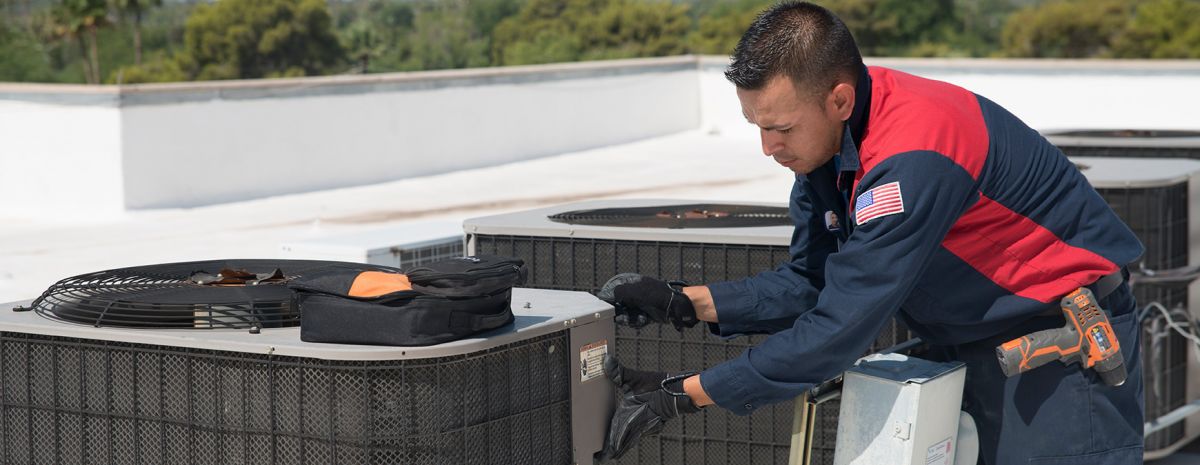RSI is a Great Training Option for Everyone
Learn more about how we can prepare you to advance your career.
Are you interested in how refrigerators work? If so, consider a career in refrigeration technologies. In as little as six months, you can complete the Refrigeration Technologies program at The Refrigeration School (RSI) and start working in the industry as an apprentice. This program trains you for entry into a service and maintenance technician role that uses the technologies of heating, air conditioning, ventilation, and refrigeration (HVAC/R). So, are you wondering, “How does a refrigerator work?”
How Does a Refrigerator Work?
Refrigerators remove heat from the inside to keep food fresh. They use a closed system that moves refrigerant in coils throughout the refrigerator. The refrigerant separates the hot air by absorbing the heat and moving it out of the refrigerator. The cycle continues and helps keep the inside of a refrigerator cool.
Some of the essential terms you will need to know to understand how the refrigerator works include the following:
Compressor – refrigerant gas is compressed using electricity to a higher pressure, and its temperature rises.
Condenser – the refrigerant gas transfers into the condenser when it condenses into a liquid.
Get Started on the Path to a New Career
Fill out our form to learn how we can help you change your life.
Expansion Valve – the liquid refrigerant pressure is reduced as it goes through the expansion device, and the liquid turns into vapor.
Evaporator – cold liquid refrigerant absorbs warm air inside the refrigerator, turning it back into gas. Then, it goes back to the compressor.
Ventilation – heat is released from the ventilation on the back of the refrigerator.
The following steps explain how a refrigerator works1:
Step #1: Refrigerant is Compressed
The cooling cycle begins in the compressor. Refrigerant is drawn into the compressor and then released at a higher temperature.
Step #2: Hot Air is Pushed Out
The compressor pushes out the refrigerant in the condenser coils outside the refrigerator—the refrigerant exchanges its heat with room-temperature air.
Step #3: Refrigerant Becomes a Liquid
The hot refrigerant in the condenser coils becomes a liquid when it meets the cooler air in the kitchen.
Step #4: Heat is Absorbed
The liquid refrigerant cools down and flows into the evaporator coils.
Step #5: Heat is Absorbed
The refrigerant absorbs the heat in the refrigerator, cooling the air inside the refrigerator.
Step #6: The Refrigerant Evaporates
The refrigerant liquid evaporates as gas back into the compressor.
Step #7: The Cycle Repeats
The repetition of the cooling cycle helps the refrigerator stay cool.
What are the Principles of Thermodynamics?
Thermodynamics is the science of the transformation of energy. There are three laws of thermodynamics2. They include:
0th Law – if two systems are in thermal equilibrium with a third system, the first two systems are in thermal equilibrium with each other.
1st Law – energy cannot be created or destroyed. It can only change from or be transferred from one object to another.
2nd Law – for a spontaneous process, the entropy of the universe increases. Entropy is the degree of randomness or disorder in a system.
3rd Law – a perfect crystal at zero Kelvin has zero entropy.
Thermodynamics and Refrigeration
The refrigeration cycle is based on thermodynamics. A refrigerator operates on a cycle that returns the refrigerant to the same state (from gas to liquid and back to gas). The refrigeration cycle removes heat from the refrigerator to cool the inside. This happens by changing the pressure of the refrigerant through a cycle of compression and expansion.
Want To Learn More?
Ready to start your new career at one of the best schools for HVAC in Phoenix? Because HVAC is a hands-on job, technical training is typically required for anyone to enter this field. Many people invest in a trade program to learn the trade skills they need to be safe and effective as professionals. To learn more about our HVAC program offered at the Phoenix, AZ campus, contact us at The Refrigeration School or call 1-888-671-5803.
- https://www.maytag.com/blog/kitchen/how-does-a-refrigerator-work.html
- https://www.khanacademy.org/science/ap-biology/cellular-energetics/cellular-energy/a/the-laws-of-thermodynamics
Additional Sources




